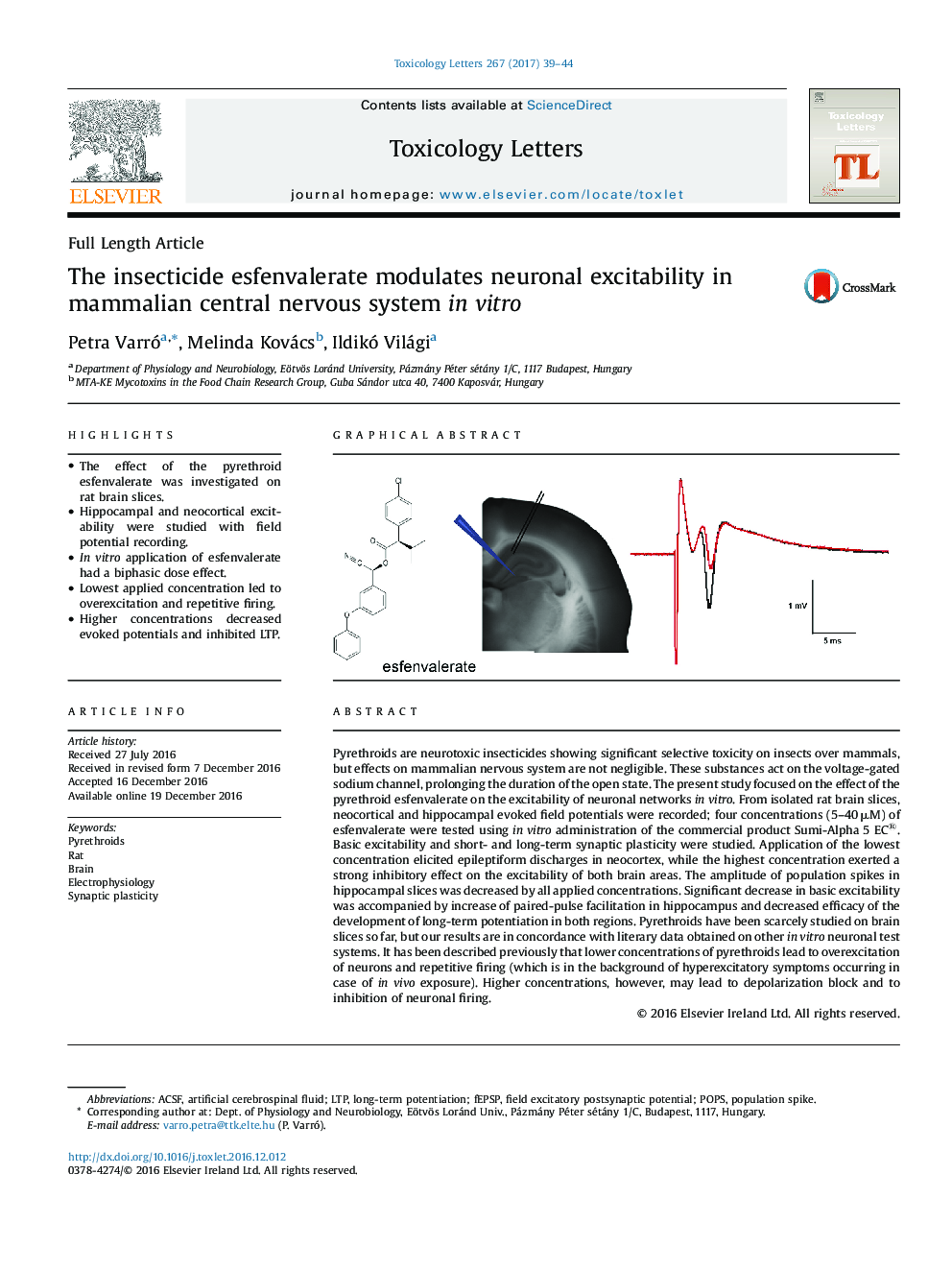| Article ID | Journal | Published Year | Pages | File Type |
|---|---|---|---|---|
| 5562228 | Toxicology Letters | 2017 | 6 Pages |
â¢The effect of the pyrethroid esfenvalerate was investigated on rat brain slices.â¢Hippocampal and neocortical excitability were studied with field potential recording.â¢In vitro application of esfenvalerate had a biphasic dose effect.â¢Lowest applied concentration led to overexcitation and repetitive firing.â¢Higher concentrations decreased evoked potentials and inhibited LTP.
Pyrethroids are neurotoxic insecticides showing significant selective toxicity on insects over mammals, but effects on mammalian nervous system are not negligible. These substances act on the voltage-gated sodium channel, prolonging the duration of the open state. The present study focused on the effect of the pyrethroid esfenvalerate on the excitability of neuronal networks in vitro. From isolated rat brain slices, neocortical and hippocampal evoked field potentials were recorded; four concentrations (5-40 μM) of esfenvalerate were tested using in vitro administration of the commercial product Sumi-Alpha 5 EC®. Basic excitability and short- and long-term synaptic plasticity were studied. Application of the lowest concentration elicited epileptiform discharges in neocortex, while the highest concentration exerted a strong inhibitory effect on the excitability of both brain areas. The amplitude of population spikes in hippocampal slices was decreased by all applied concentrations. Significant decrease in basic excitability was accompanied by increase of paired-pulse facilitation in hippocampus and decreased efficacy of the development of long-term potentiation in both regions. Pyrethroids have been scarcely studied on brain slices so far, but our results are in concordance with literary data obtained on other in vitro neuronal test systems. It has been described previously that lower concentrations of pyrethroids lead to overexcitation of neurons and repetitive firing (which is in the background of hyperexcitatory symptoms occurring in case of in vivo exposure). Higher concentrations, however, may lead to depolarization block and to inhibition of neuronal firing.
Graphical abstractDownload high-res image (98KB)Download full-size image
